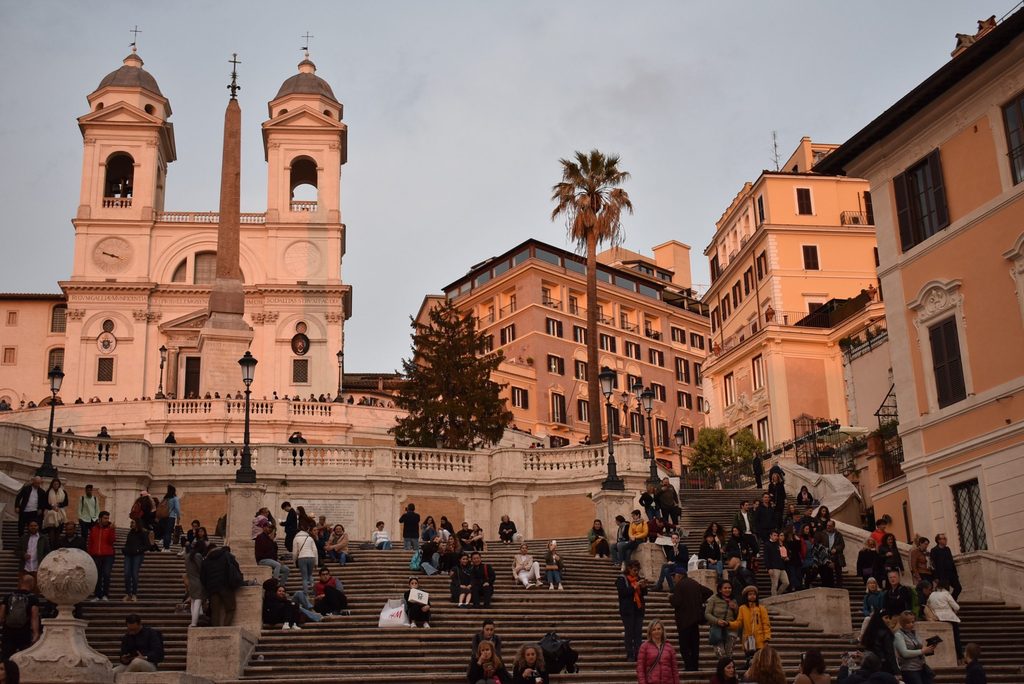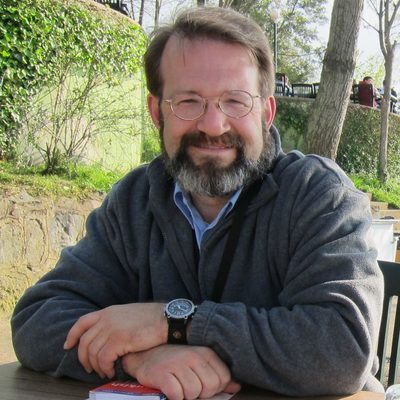A Discussion with Faculty Directors Bill North and Victoria Morse

What inspired you to plan History, Religion, and Urban Change? What did you hope to accomplish?

Victoria:
Bill and I both had the opportunity of being enrolled at the American Academy of Rome, which is a research center. One of the things that the Academy had us do was to go on “active walks” around Rome with the Resident Professor of Archaeology. These walks were more focused on ancient Rome, but they were nevertheless a fun way to learn about and connect with the city. When planning History, Religion, and Urban Change in Medieval and Renaissance Rome, we wanted to incorporate this method of learning about sites/locations into our program.

Bill:
We considered having the program take part in multiple cities, but ultimately decided that our home base would be in Rome. We wanted our students to experience what it’s like to get to know a city intimately, but we were also concerned with offering students a real sense that they had visited Italy in a more comprehensive way. For this reason, we incorporate a few longer trips to North and Central Italy (Assisi and Sicily, for example) into our program.
Victoria:
All-in-all, we wanted the program to provide students with a wonderful taste of Italy. One of the great pleasures of traveling in Italy is shopping, cooking, and eating, which students will get to do a lot of. They will get to know their neighborhood, buy fresh food from the local market, try their hands at cooking for themselves, and so much more.
Bill:
Rome is a fascinating city. Given its long history of habitation, you get a real sense for how the past and present are interconnected. Victoria and I were very excited to share this experience with Carleton students.
What makes this program different from other study abroad programs?
Bill:
Well, for starters, there aren’t very many off-campus studies programs that deal with the Medieval world. But one distinctive feature about this program is that we’ve built the courses very much in dialogue with the site visits. As we were planning our courses, we wanted our assigned readings to center on the places that we would visit; we felt that this would allow students to think more deeply about how their personal experiences at a site compare with portrayals of place in literature. Early on, we came to the conclusion that we wanted the engagement with sites to be our laboratory. This is a program that encourages students to actively engage with the city and the environment around Rome. Another way in which this program is different from other study abroad programs is that we try to bring together history, religion, archaeology, art history, and urban studies. This multidisciplinary approach to learning is challenging, but it allows students to understand a city for all its past and present complexity.
Victoria:
One other unique thing that History, Religion, and Urban Change program participants partake in is exploring Rome using historic (as opposed to contemporary) maps. Past students have found this activity incredibly rewarding. They are challenged to imagine what the city might have looked like in the past, and in so doing, they often develop a bigger sense of what it would have been like to live in the city during a different period. This activity helps students re-immerse themselves in a past that can no longer be seen directly.
What does a typical day look like on your program?
Victoria:
There are three types of days on the History, Religion, and Urban Change program: classroom days, one-day site visits, and longer trips.
Classroom days generally occur on Mondays and Wednesdays. We begin with an Italian class, followed by the class that Bill and I co-teach, and then end with a European Studies course. Classes are taught in a very nice study center, which is situated within a 20-minute walk of where everybody is living. There is a fabulous bar beneath the study center with exquisite coffee and pastries. After the morning classes, we will take a generous Italian-style lunch break, and then students have the afternoon to explore the city.
Our one-day site visits generally take place at sites within Rome. We will prepare students for these visits in the classroom the day before. After each site visit, we will have a whole-class discussion, and then students will have the rest of the day to do what they want. Site visits generally take place on Tuesdays and/or Thursdays.
Occasionally, we will take students on longer trips a bit further from the city center. On these days, we will depart at 8:30am, take a bus to the site, have lunch, explore the site, and then get back to Rome around 3:30-4:00pm. Weekends are generally left open so that students can attend cultural events, do some independent traveling, and partake in activities that interest them.
In the past, some of the sites that we have visited include the Santa Prassede, Santa Maria Antiqua, and Sant’Angelo in Pescheria churches, the Basilica San Clemente, and Villa Lante (Renaissance Garden north of Rome).
What does the housing situation look like, and what are the benefits of this living arrangement to students?
Both:
We do not have students live in homestays for this program. Due to the intense nature of our site visits, we didn’t feel that it was fair to the host families. Instead, students will be living in apartments in central Rome. When we first ran this program, we were surprised at just how excited students were to live independently and partake in the apartment living experience. These are skills that students are going to need at some point in their future, and we also felt that it would be beneficial for students to try living in a place that is so different from the United States.
Rome is a city that still has very distinct neighborhoods. We were enthusiastic for our students to get to know their neighborhoods (as well as their neighbors and local shopkeepers, since there is a culture in Rome where shopkeepers get to know their customers in a personal manner).
What are you most looking forward to?
Victoria:
At this point after the pandemic, we are just looking forward to getting to go to Italy again! One of the things that we are constantly doing is changing/tweaking the program to try and make it better for ourselves and for the students. Every group of students is different, so no two programs are the same. I am looking forward to the conversations that we will have with our students, all of whom bring different perspectives, opinions, interests, and skills to the table.
What advice would you give to students to encourage them to study abroad during their Carleton career? What benefits do you see to the experience in general?
Both:
It becomes a lot more difficult to travel once you graduate. You will have a job, relationships, pets, etc. to consider after college, so definitely take advantage of the opportunity to travel while you’re here at Carleton! Additionally, you can do some amazing intellectual work while abroad. Sometimes it requires traveling to and seeing a site in-person for you to understand its history. Finally, traveling to another country will give you an appreciation for how fascinatingly diverse people are. Your mind will be opened to the diversity of possibilities for what it means to be human.
Victoria Morse is a Professor History. She has been at Carleton since 1999.
Bill North is a Professor of History. He has been at Carleton since 1999.